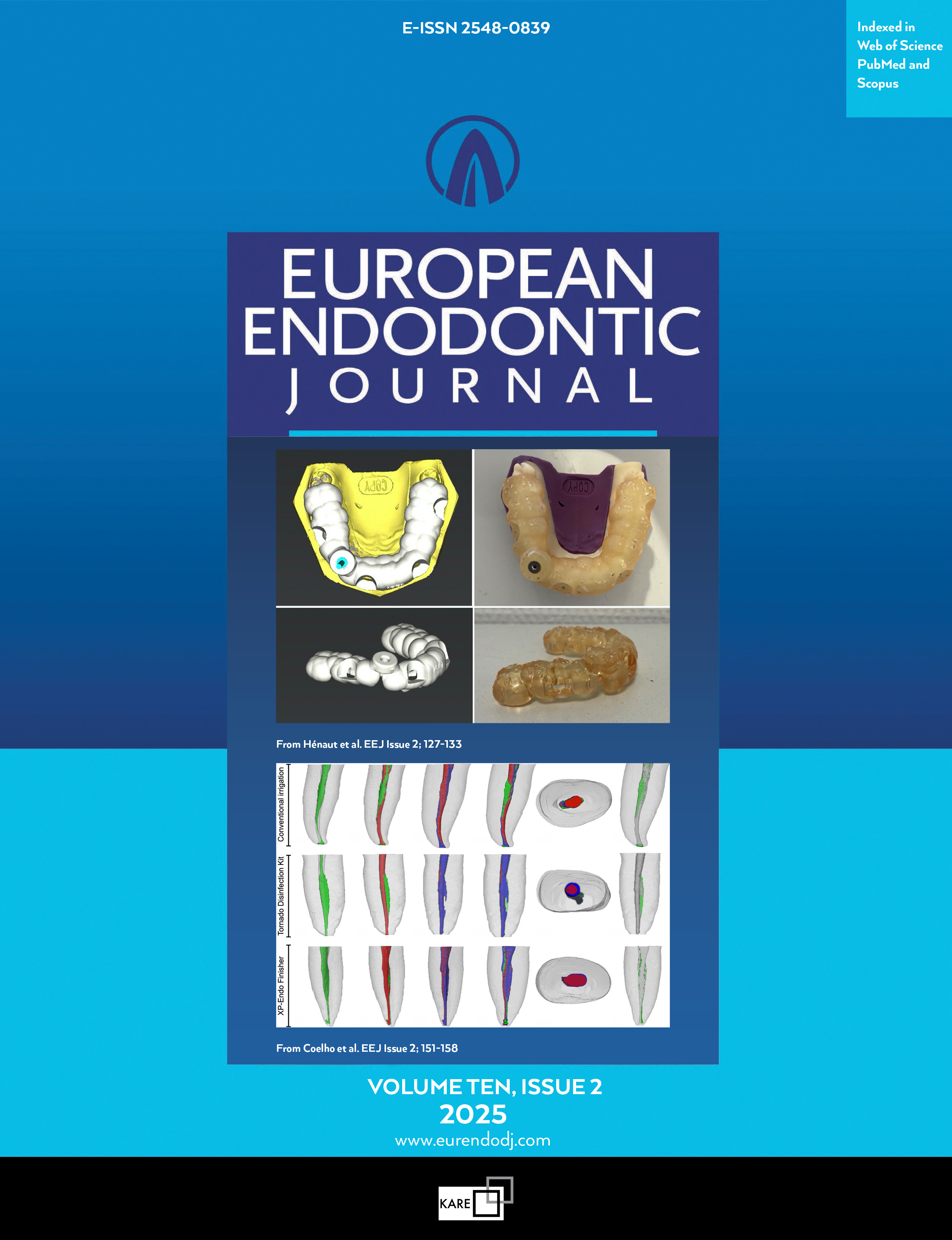Metrics
2023 IMPACT FACTOR
5 year Impact Factor
Eigenfactor
2023 CiteScore
Journal Citation Reports (Clarivate, 2024)(Dentistry, Oral Surgery & Medicine (Science))
Effect of Obturation Technique on Neosealer Flo Bioceramic Sealer Penetration into Dentinal Tubules: A Comparative Confocal Laser Scanning Microscopic Study
Huda Atef1, Abeer Hashem Mahran2, Ahmed Abuelezz1, Tarek Elsewify31Department of Endodontics, Misr International University, Faculty of Dentistry, Cairo, Egypt2Department of Endodontics, Ain Shams University, Faculty of Dentistry, Cairo, Egypt
3Department of Endodontics, Ain Shams University, Faculty of Dentistry, Cairo, Egypt; Department of Restorative Dental Sciences, Gulf Medical University, College of Dentistry, Ajman, UAE
Objective: This study compared the dentinal tubule penetration of NeoSEALER Flo bioceramic sealer using single cone and cold lateral compaction obturation techniques.
Materials and Methods: Eighteen extracted single-rooted mandibular premolars were randomly divided into two groups (n=9) according to the obturation technique used. The maximum penetration depth in microns, percentage of penetration depth, and percentage of penetration area of the NeoSEALER Flo bioceramic sealer were assessed using confocal laser scanning microscopy at different root levels; coronal, middle, and apical. Data was statistically analyzed using Kruskal-Wallis's test followed by Dunn's post hoc test with Bonferroni correction and Friedman's test followed by Nemenyi post hoc test with the significance level set at p<0.05.
Results: The single cone obturation technique has shown a statistically significantly higher percentage area of NeoSEALER Flo penetration than the lateral compaction technique at the coronal root level only. Otherwise, both obturation techniques have shown no statistically significant differences in NeoSEALER Flo penetration distance, percentage of penetration distance, and percentage of area penetration at the middle and apical root levels.
Conclusion: The single cone obturation technique can be used with bioceramic sealers yielding comparable results to the cold lateral compaction technique. (EEJ-2024-12-192)
Manuscript Language: English


